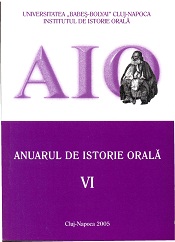FORMAŢIUNI DIN REZISTENŢA ARMATĂ ANTICOMUNISTĂ ÎN SUDUL MOLDOVEI (1945-1958)
GROUPS OF ANTI-COMMUNIST ARMED RESISTANCE IN SOUTHERN MOLDAVIA (1945-1958)
Author(s): Dorin DobrincuSubject(s): History
Published by: Argonaut
Summary/Abstract: Following the Second World War, the constraint of Soviet pattern in Romania was doubled by punitive measures against political enemies and, generally speaking, against everyone seen, by the communist regime, as intruder. Those who managed to escape from being imprisoned tried to hide, part of them arming themselves, constituting anticommunist groups and organizations. The phenomenon was to be noticed even in Southern Moldavia. Usually there were small formations, consisting in few members (such as the groups leaded by Ioan Milian, Ioan Lupes, Constantin Dan etc.); beside those there were larger groups („The Resistance Centre from Uturea”, „The Carpathian Eagle Legion”, „The Young Guard”/”Home’s Shield”, „The State’s Rescuers”, the group leaded by Dumitru Oprisan, „The Anticommunist Surreptitious Group”, „ The Falcons from Crusade of Freedom”, „The Movement of People of Justice from Romania”, „The Organization of Relievers from Focsani” etc.) While some of these organizations had a program of their own, other groups were nothing but a concourse of events union of few fugitives away from the communist regime. From a political point of view the members of these groups and organizations were Iron Guardists, Peasants, Liberals, former members of Communist Party or Young Communists Union, or pure citizens, members of no party at all. Most of them were young, enrolled in high schools, but there were also older ones. Anticommunist resistance from Southern Moldavia meant no great danger for the communist regime, but exposed the local authorities to some difficulties; thus, the latter couldn’t pretend total control over the population. All these anticommunist nucleuses were cut down during the first decade of existence of the totalitarian regime. Their members were assassinated during fighting, or were simply executed by special platoons, while those captured were tried by military instances and thrown away in Romanian prisons.
Journal: Anuarul Institutului de Istorie Orală
- Issue Year: 2005
- Issue No: VI
- Page Range: 163-192
- Page Count: 30
- Language: Romanian

